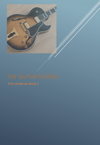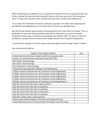Guitar System Book 1
For the more advanced players.
Designed to build a strong foundation in jazz guitar, covering music theory, fretboard navigation, and practical application. Students will learn major scales, intervals, and the chromatic scale before progressing to harmonization and diatonic chord structures. The CAGED system is introduced for understanding chord shapes across the neck, along with jazz chord progressions and minor and dominant 7th chords. Advanced topics include secondary dominants, shell voicing, arpeggios, and improvisation. Students will progress towards confidently playing jazz chord progressions, apply arpeggios and scales, and navigate the entire fingerboard with fluency in any key across a range of musical styles.
- Understanding the Diatonic System
- Definition of diatonic music (using only notes from a given key).
- Construction of the major scale using the pattern: Tone, Tone, Semi-tone, Tone, Tone, Tone, Semi-tone.
- Understanding intervals (semi-tones and tones) as building blocks of harmony.
- Recognition of enharmonic equivalents (e.g., F# and Gb being the same pitch).
- Introduction to the Chromatic Scale
- The chromatic scale contains all available notes in Western music.
- Use of the circular diagram to visualize relationships between notes.
- Harmonizing the Major Scale
- Understanding chords as harmonised scales (stacking thirds).
- Constructing diatonic triads from the major scale:
- I (Major), II (minor), III (minor), IV (Major), V (Major), VI (minor), VII (diminished).
- The CAGED System
- Learning the five major chord shapes (C, A, G, E, D) across the fingerboard.
- Recognising the root note locations for each shape.
- Connecting the chord positions through a logical system to map out the fretboard.
- Navigating the Fingerboard
- Memorising note names on the fretboard systematically.
- Using octave relationships to reinforce note locations.
- Breaking the fretboard into manageable sections rather than memorizing it all at once.
- Applying Theory to the Guitar
- Playing major, minor, and dominant 7th chords in all five CAGED positions.
- Learning diatonic chord progressions in each position.
- Recognising secondary dominants (V of a V) and their function in modulation.
- Introduction to Jazz Harmony
- Playing chord progressions across multiple positions on the fretboard.
- Recognising common jazz keys and their frequency in standard repertoire.
- Understanding the role of harmonic movement in jazz (temporary modulations).
- Developing a Systematic Approach to Learning
- Applying knowledge progressively (starting from open position, moving up the neck).
- Using daily practice routines to reinforce fingerboard fluency.
- Connecting scales, arpeggios, and chord shapes logically to build a jazz vocabulary.






